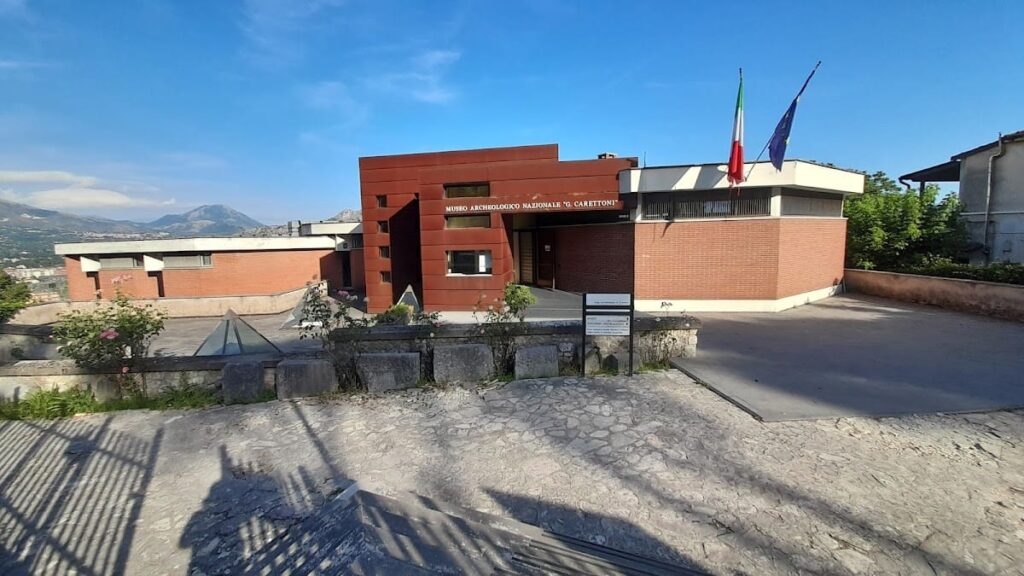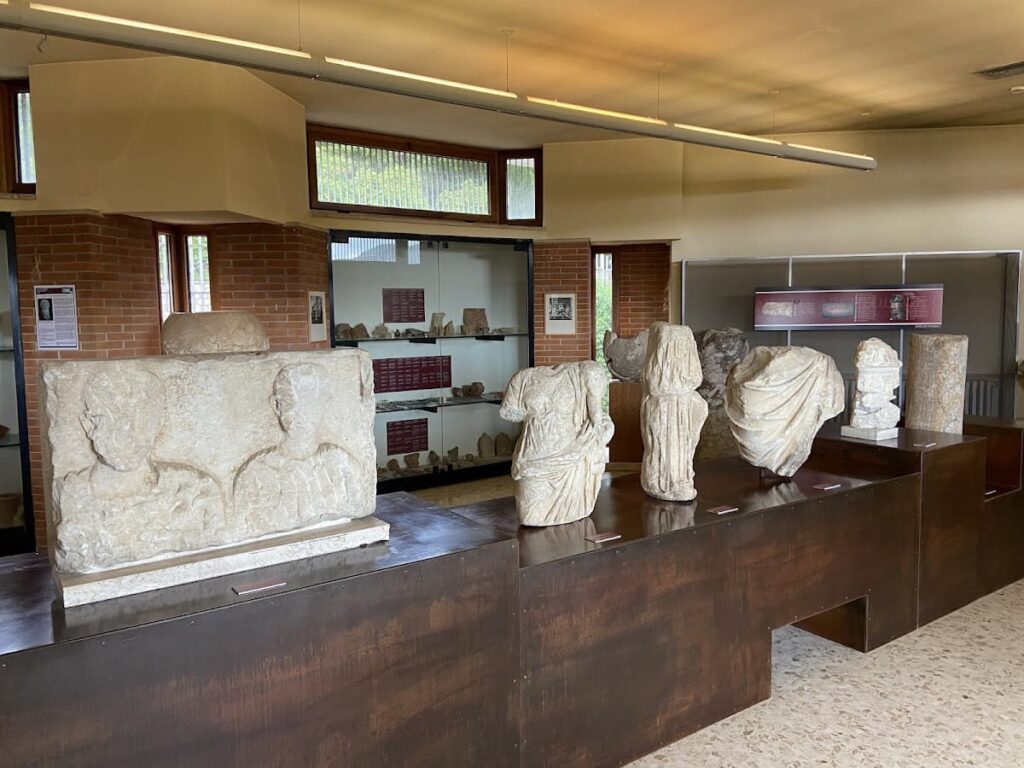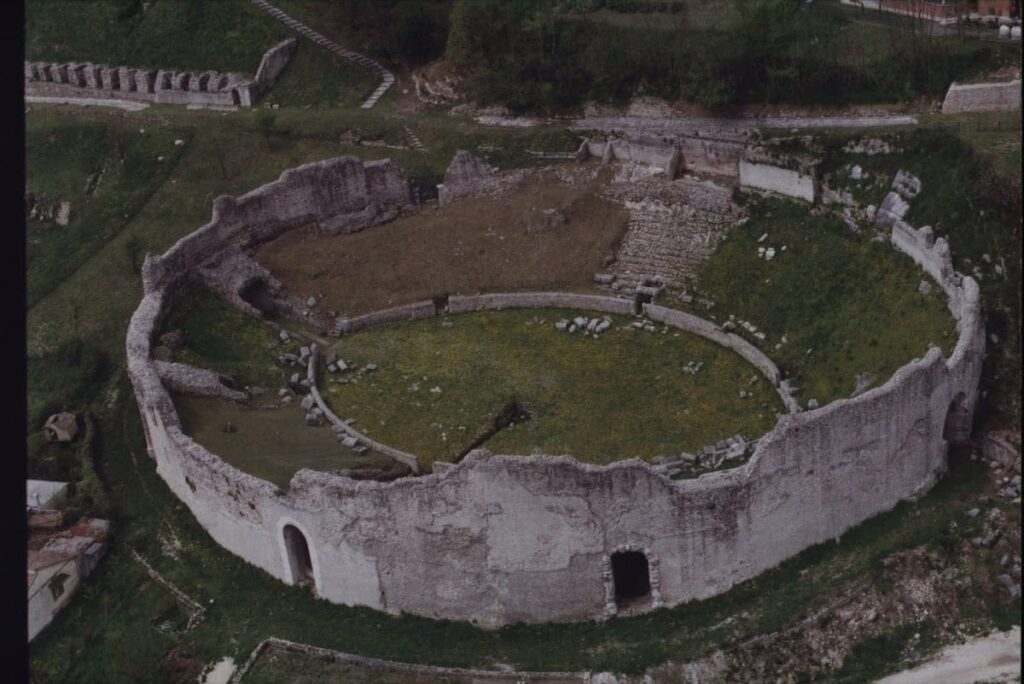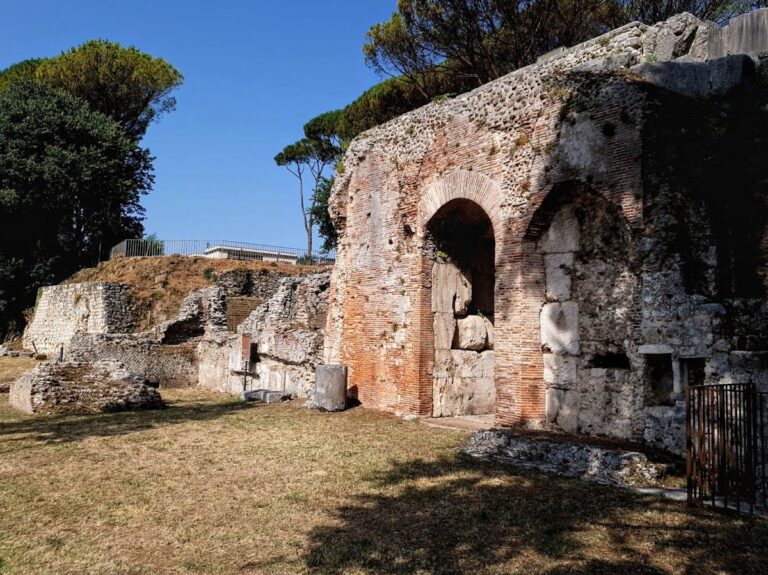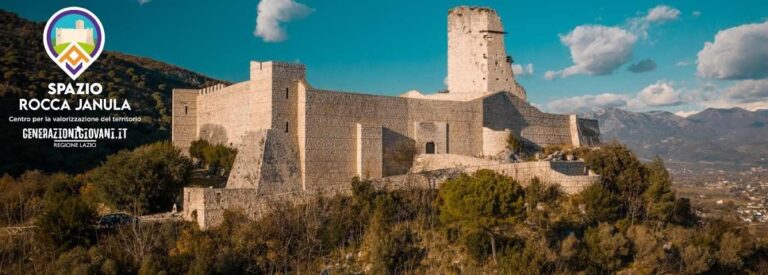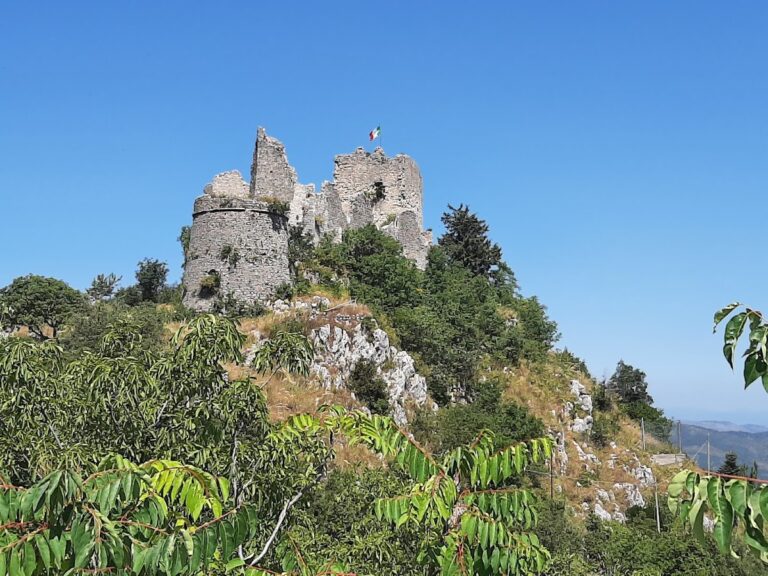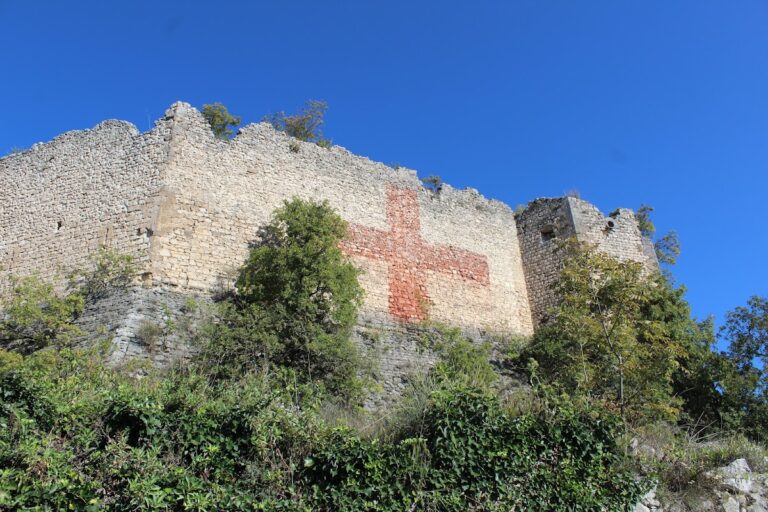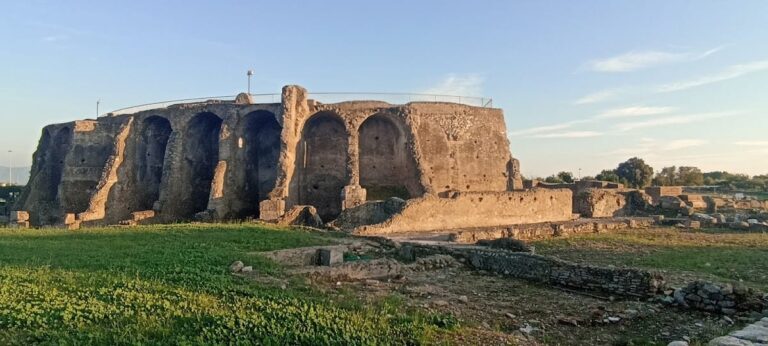Casinum: An Ancient Roman Site in Central Italy
Visitor Information
Google Rating: 4.5
Popularity: Low
Google Maps: View on Google Maps
Official Website: direzioneregionalemuseilazio.cultura.gov.it
Country: Italy
Civilization: Roman
Remains: City
History
Casinum is located in the modern city of Cassino, within the province of Frosinone, in central Italy. The site occupies a position near the ancient Via Latina, an important Roman road. Its origins trace back to prehistoric times, with early inhabitants including the Volsci, an Italic people, followed by the Samnites. These groups established the initial settlement before Roman control was established in the 3rd century BCE.
Under Roman rule, Casinum developed into a fortified urban center. The city was enclosed by extensive polygonal masonry walls dating from the 5th to 4th centuries BCE, which were expanded in later periods. Casinum’s urban layout included two main gates, Porta Romana and Porta Campana, with the latter still visible today. The city’s location along the Via Latina connected it to broader regional networks.
During the late Republic and early Imperial periods, Casinum saw significant construction projects. The Roman amphitheater, likely funded by Ummidia Quadratilla, was built in the late Augustan or Julio-Claudian era. Ummidia Quadratilla also commissioned a mausoleum near the city walls, constructed in the mid-1st century CE. This mausoleum was later converted into a church in the 11th century and restored in the 17th century, reflecting continued use and adaptation of Roman structures.
The Roman theater, known since the 18th century and excavated in the 1930s, dates to the Augustan age. It suffered damage during World War II but was restored starting in 1956. The theater’s presence indicates Casinum’s cultural importance during the early Imperial period. Nearby, the Ninfeo Ponari, a semi-subterranean nymphaeum from the 1st century BCE with decorative phases extending into the 2nd century CE, served as a water sanctuary linked to elite residences.
Casinum’s archaeological remains reflect its evolving role from a fortified settlement to a Roman city.
Remains
The archaeological site of Casinum is enclosed by polygonal masonry walls dating from the 5th to 4th centuries BCE. These megalithic walls form a circuit approximately 4.5 kilometers long, enclosing an area larger than the urbanized zone. Three successive wall circuits have been identified, including one beneath Montecassino Abbey. The walls demonstrate early defensive architecture using large, irregular stone blocks fitted without mortar.
Two city gates are documented: Porta Romana, which no longer exists, and Porta Campana, which remains visible. The Via Latina Nuova, a white limestone paved road with low sidewalks, runs through the city from the former Porta Romana to Porta Campana. The road shows clear cart wheel ruts, indicating heavy use. It passes alongside terraced retaining walls featuring niches and orthogonal arms.
The Roman amphitheater, built outside the urban area near the polygonal walls, dates to the late Augustan or Julio-Claudian period. It has an elliptical plan measuring 85 by 69 meters and reaches 18 meters in height. Constructed in opus reticulatum, a technique using small diamond-shaped stones, its perimeter wall includes rectangular blocks that supported poles for a velarium, a retractable awning. Three rectangular rooms, including a tribunal and two side boxes, are located at the northwest end on the minor axis. The amphitheater could seat approximately 4,000 to 4,200 spectators.
The mausoleum of Ummidia Quadratilla, near the city walls and theater, was built in the mid-1st century CE. It combines opus quadratum, large squared limestone blocks, with an outer facing of opus latericium, brickwork, and reticulated limestone panels. The upper level is mostly lost except for an octagonal drum, while the lower level contains a partially subterranean cella, or inner chamber. The mausoleum was converted into a church in the 11th century and restored in the 17th century.
The Roman theater, dating to the Augustan age, features a cavea, or seating area, divided by a narrow corridor called a praecinctio into lower (ima) and upper (summa) sections. The cavea has 12 seating wedges (cunei) separated by stairways cut into stone blocks. The upper cavea was once topped by a semi-circular vaulted gallery known as a crypta, now largely lost. The scena, or stage building, has a rectangular plan with a partially preserved back wall (frons scaenae) featuring three doorways: a central regia and two lateral hospitalia. The rear wall is faced with opus reticulatum and framed by short ramps and limestone semicolumns. Excavations revealed a double-bay portico on three sides of the square behind the scena and a single-bay portico with pillars and columns on the west side, with surviving stylobate and drainage channels.
The Ninfeo Ponari is a semi-subterranean nymphaeum from the 1st century BCE, located in the northern sector near elite houses. It consists of a rectangular hall with a lowered barrel vault and three walls pierced by three rectangular niches each. The front is open and preceded by a nearly square atrium with vertical lesenes and a central square basin. The interior decoration includes two phases: an early rustic mosaic with Egyptian blue tesserae, limestone fragments, polychrome glass, and shells; and a later imperial phase with painted plaster. The atrium floor has a simpler monochrome mosaic, and the basin is lined with white veined marble, flanked by irregularly arranged reused marble slabs.
The museum adjacent to the site covers 500 square meters and includes three exhibition rooms and a lower-level lapidarium. The lapidarium displays stone materials such as Republican-era polygonal limestone walls and later opus caementicium (concrete) structures uncovered during construction. It also exhibits inscriptions, mostly dedicatory texts naming prominent families from the Republic and Imperial periods.
Among the museum’s notable artifacts is a marble statue of a Roman hero found in the theater’s large well in 1936. Carved in Pentelic marble and dated to the late Republic (second half of the 1st century BCE), the statue depicts a nude male in heroic rest with a highly individualized face and a softly modeled athletic body. It may represent a member of the gens Ummidia. Other exhibits include a richly decorated funerary bone bed from the Aquinum necropolis, dated from the late 3rd to early 2nd century BCE, featuring high relief female winged figures, erms with female or putto heads, and bas-reliefs of swan heads and centaurs. The bed’s wooden frame had iron cores and bone inlays with traces of gilding.
Additional finds from local necropolises include bronze fibulae (brooches), iron tools, glass balsamaria (small bottles), silver coins, terra sigillata and black gloss pottery, and engraved gems. These artifacts span from the Paleolithic through the Roman Imperial period, illustrating the long history of settlement in the area.
